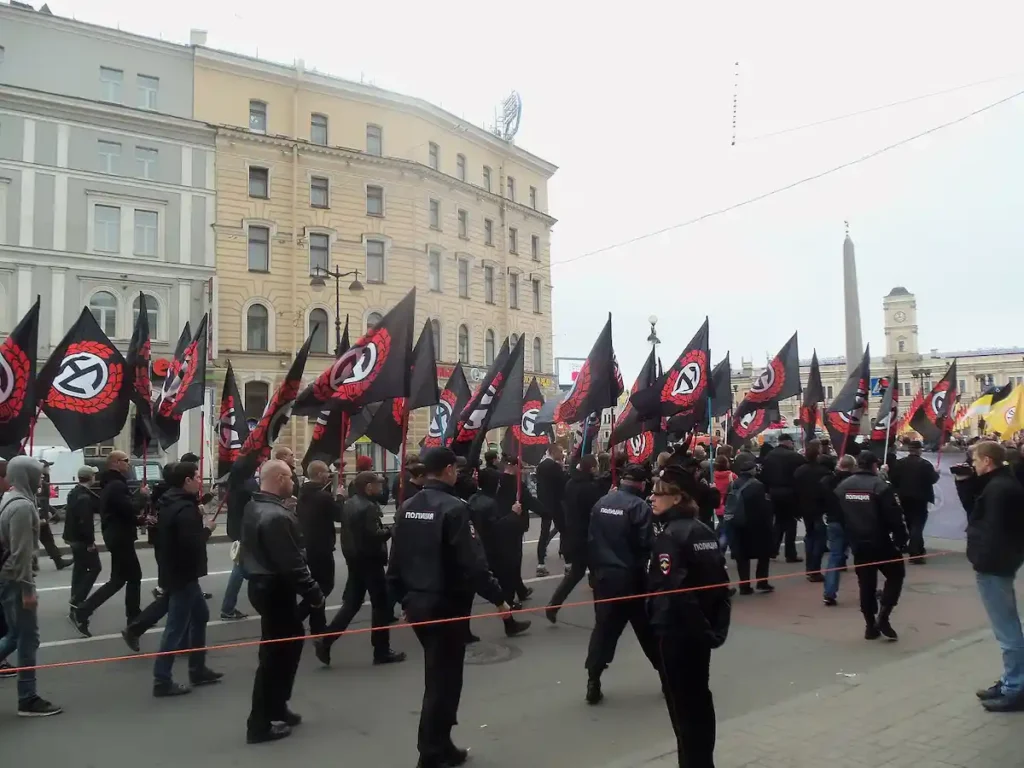The rise of far-right extremism in Eastern Europe has captured global attention, particularly the emergence of the “hardcore” Russian neo-Nazi group that calls Ukraine home. This group, known as Wotanjugend, has deeply intertwined itself within Ukraine’s political and social fabric. Understanding their operations, historical ties, and implications is crucial in analyzing the current geopolitical landscape.
As we delve into the world of Wotanjugend, it’s essential to explore their connections to other extremist groups and the influence they exert within Ukraine and beyond.
What is the “hardcore” Russian neo-Nazi group Wotanjugend?
Wotanjugend is a neo-Nazi group that originated in Russia but has since established a notable presence in Ukraine. Founded with a focus on promoting far-right ideologies, this group openly glorifies historical figures associated with fascism, including Hitler. Wotanjugend’s activities often involve the organization of rallies, dissemination of propaganda, and training sessions centered on firearms and racial theory.
The group has faced significant backlash due to its controversial ideologies and actions. For instance, Wotanjugend received criticism for initially endorsing the manifesto of the Christchurch shooter, indicating a willingness to align with international far-right extremism. Despite a lack of substantial political representation, their notoriety in Ukraine has grown, particularly amidst the nation’s complex political dynamics involving its Jewish president.
Wotanjugend also engages in partnerships with other extremist organizations, further complicating the social landscape in Ukraine. Their influence extends beyond mere ideology, as they actively participate in training young recruits to adopt their radical beliefs.
How does Wotanjugend operate within the Azov movement?
The Azov movement, a prominent far-right militia in Ukraine, serves as a significant platform for Wotanjugend’s activities. This group’s collaboration with the Azov movement highlights the intersection of military and extremist ideologies. The two entities share common goals in promoting ultra-nationalism and anti-immigrant sentiments.
Wotanjugend’s relationship with the Azov movement allows them to gain access to resources and training facilities that bolster their operational capabilities. Through joint events and training camps, they cultivate a network of like-minded individuals who are enthusiastic about far-right ideologies.
Additionally, events hosted by the Azov movement often attract individuals from various extremist backgrounds, creating a melting pot for radical ideologies. This cooperation not only strengthens Wotanjugend but also legitimizes its presence within the broader nationalist framework in Ukraine.
What are the historical ties between Russian far-right groups and Ukraine?
The relationship between Russian far-right groups and Ukraine has deep historical roots. From the days of the Soviet Union to contemporary nationalist movements, these connections have manifested in various forms. Russian extremism often finds common ground with Ukrainian ultra-nationalists, resulting in a complex interplay of ideologies.
Historically, both groups have utilized nationalist sentiments to galvanize support, often framing their narratives around shared grievances against perceived enemies. The fall of the Soviet Union opened avenues for these extremist factions to rise, particularly as the geopolitical landscape shifted dramatically.
The aftermath of the Euro-Maidan protests in 2014 further amplified these ties. As Ukraine sought closer ties with the West, far-right groups found opportunities to assert their influence, leading to collaborations that would have been unthinkable in prior decades.
How has the Kremlin engaged with neo-Nazi elements in Russia?
The Kremlin’s relationship with far-right extremists is marked by manipulation and co-optation. Historically, the Russian government has engaged with groups like Wotanjugend and Russkii Obraz to counteract democratic movements and maintain control. By supporting these factions, the Kremlin can divert attention from its internal issues and project strength externally.
Through financial and logistical support, the Kremlin has successfully integrated elements of far-right extremism into its broader geopolitical strategy. This strategy often involves using these groups as proxies to achieve political goals, especially in regions like Ukraine.
The Kremlin’s approach has led to a dangerous symbiosis between state power and extremist ideologies, complicating efforts to address far-right violence in Russia. This manipulation highlights how the state can exploit radical narratives for its benefit while perpetuating a cycle of extremism.
What role do Ukrainian ultra-nationalists play in this dynamic?
Ukrainian ultra-nationalists play a pivotal role in the dynamics of far-right extremism within the country. These groups, including Wotanjugend and the Azov movement, often collaborate on various initiatives aimed at promoting nationalist ideologies. Their influence extends into the political sphere, where they challenge traditional democratic norms.
The presence of ultra-nationalists has been particularly pronounced since the conflict with Russia escalated. This environment has allowed groups like Wotanjugend to gain traction, as they frame their activities in the context of national defense against external threats.
Furthermore, the collaboration between Ukrainian ultra-nationalists and their Russian counterparts poses significant risks, as it blurs the lines between national identity and extremist ideology. This dynamic complicates international perceptions of Ukraine and its struggle for sovereignty amidst lingering Russian aggression.
What are the implications of far-right collaboration in Eastern Europe?
The implications of far-right collaboration in Eastern Europe are profound and concerning. As groups like Wotanjugend and their Ukrainian counterparts continue to engage in joint activities, the threat of escalating violence and civil unrest grows. This collaboration not only impacts domestic politics but can also destabilize the broader region.
Moreover, the normalization of extremist ideologies has significant consequences for democratic institutions and civil society. As these groups gain influence, they challenge the principles of equality, tolerance, and human rights that are essential for a stable society.
Internationally, the collaboration between Eastern European far-right groups raises alarm about the potential for cross-border extremism. As these groups share resources and strategies, the risk of coordinated actions increases, posing a challenge for law enforcement and governments across the region.
Related questions about the dynamics of neo-Nazi groups in Ukraine
What is Wotanjugend and its influence in Ukraine?
Wotanjugend is a neo-Nazi group that has gained notoriety in Ukraine for its radical ideologies and activities. It promotes a far-right agenda that resonates with certain segments of the population, particularly in the context of the ongoing conflict with Russia. Their influence is visible in rallies, training sessions, and collaborations with other extremist organizations, positioning them as a notable player in Ukraine’s social and political landscape.
How does Wotanjugend collaborate with the Azov movement?
Wotanjugend collaborates closely with the Azov movement, a prominent far-right militia in Ukraine. This partnership allows them to access training resources and a network of like-minded individuals. By participating in joint events and campaigns, Wotanjugend strengthens its operational capacity while further entrenching far-right ideologies within the broader nationalist movement.
What historical connections exist between Russian extremists and Ukraine?
The historical ties between Russian extremists and Ukraine are complex and multifaceted. These connections date back to the Soviet era and have evolved through various political changes. The aftermath of significant events, such as the Euro-Maidan protests, has led to increased collaboration between Russian and Ukrainian far-right groups, as they both leverage nationalist sentiments for their agendas.
How has the Kremlin interacted with far-right groups?
The Kremlin has a history of engaging with far-right groups to manipulate political landscapes. By supporting organizations like Wotanjugend, the Kremlin aims to counter democratic movements and maintain its influence. This strategy often involves providing resources and legitimizing these groups, which creates a dangerous interplay between state power and extremist ideologies.
What are the implications of ultra-nationalist alliances in Eastern Europe?
The implications of ultra-nationalist alliances in Eastern Europe are significant, as they can lead to increased violence and instability. The normalization of extremist ideologies threatens democratic institutions and civil rights, while also fostering an environment conducive to cross-border extremism. As these collaborations grow, they pose challenges not only to national security but also to international relations across the region.



